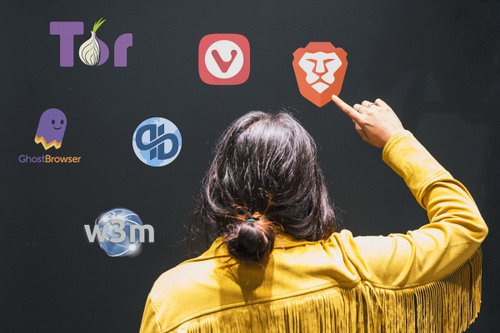5 Things to Expect When You’re the Only Data Scientist on a Developers Team
20 may 2019
3 min


Tech Editor @ WTTJ
Good news: You’ve been hired as a data scientist at the kind of startup you’ve always dreamed of being part of. But you arrive at the office on the first day to find you’re a lone data scientist surrounded by developers. Keep calm and focus on your data! We’ve compiled a list of situations you may encounter so that you’re prepared (for the worst)!
1. You’ll be nicknamed “the coder”
Data scientists come from diverse fields, such as physics, biology, mathematics, or statistics, so to begin with, developers may call you “the coder” to make sure you understand that you are different from them. Your instinct may be to respond immediately with something like, “You are so mean that your standard deviation is zero,” but if you stop to think about it, they may be right! You are indeed different, as you don’t use programming for the same purpose as them. Developers write code to build things according to features, whereas a data scientist uses code to explore and analyze data, as well as build predictive models.
2. There will be talk of languages you’ve never heard of
While you mainly work with Python, R or MATLAB, developers may use other languages that all look the same to you and you’ve never come across before, such as C++, Elixir, or Go. Don’t hesitate to learn more about them if you want to enter the developers’ world and connect with them. Did you know that some parts of the machine learning scikit-learn library use Python’s superset Cython, which allows you to generate C code?
3. You’ll discover that “Yarn” can manage dependencies
So, you’re at a stand-up meeting and the developers keep talking about Yarn, a tool that you know very well as you use it on a daily basis. But it seems that they’re using it as a package manager. How is that possible? Simple: It’s not the same tool! While your YARN makes it possible to manage multiple data-processing engines, the Yarn that developers use allows them to manage dependencies.
4. You will pretend to laugh at CommitStrip jokes that you don’t understand
CommitStrip is a popular website that publishes comics that take a humorous look at life in the world of developers, and has more than 70,000 followers on Twitter. The team will share its updates on Slack on a regular basis, especially Friday afternoons. However, even if you don’t understand the joke about the HTTP/3 protocol, make sure you laugh straight away—otherwise you may risk being banished from the banter for life!
5. You will get tired of telling the team that you are still working on the same ticket as last month
While the Agile methodology is very popular among developers, it is not fully adapted to the way data scientists need to work. That is to say it works well for you as far as planning purposes and retrospectives are concerned, but it’s hard to judge how long your tasks will take as they don’t fit the deliverables way of thinking. Also, the tasks’ requirements may change suddenly. Please note that “my model is still training” is not going to be an acceptable answer at the next stand-up meeting!
In all this, the key thing to remember is that software programmers and data scientists play two very different roles, but you can both teach each other a lot, which is easier if you belong to the same technical team. As a data scientist, you can learn from them by looking at their coding best practices. And developers can learn a lot from you by looking at the frameworks and technologies you use to explore, analyze, and visualize data. These complementary skills will be useful, as you will need for instance to pair with a DevOps engineer when deploying a machine learning model, especially on the infrastructure setup.
This article is part of Behind the Code, the media for developers, by developers. Discover more articles and videos by visiting Behind the Code!
Want to contribute? Get published!
Follow us on Twitter to stay tuned!
Illustrations by WTTJ

Más inspiración: Offbeat
Thinking outside the box once in a while is essential while coding. Take a step back on your day-to-day developer tasks and discover how other people use the same technologies and tools as you to create amazing things.

Poem #4: Firefighting
Enjoy this poem program written in the Python programming language that generates an ASCII art fire animation.
19 dic 2019

Poem #3: Avalanche of Stars
Enjoy this poem program written in the C programming language that generates ASCII art mountainscapes.
12 nov 2019

4 Things to Expect When You’re the Only Security Engineer on a Developers Team
Here are some things security engineers need to be aware of before their first day if they’re going to survive on a team of developers.
29 oct 2019

Poem #2: Alphanumeric
Enjoy this poem program written in the Julia language that uses a simple statistical model to generate endless paragraphs of redacted text.
03 oct 2019

Tired of Chrome? Try These Six Browsers
Are you tired of Chrome, Safari and Firefox? Here are six alternative browsers to consider if you’re looking for a different Internet experience!
01 oct 2019

¿Estás buscando tu próxima oportunidad laboral?
Más de 200.000 candidatos han encontrado trabajo en Welcome to the Jungle
Explorar ofertas